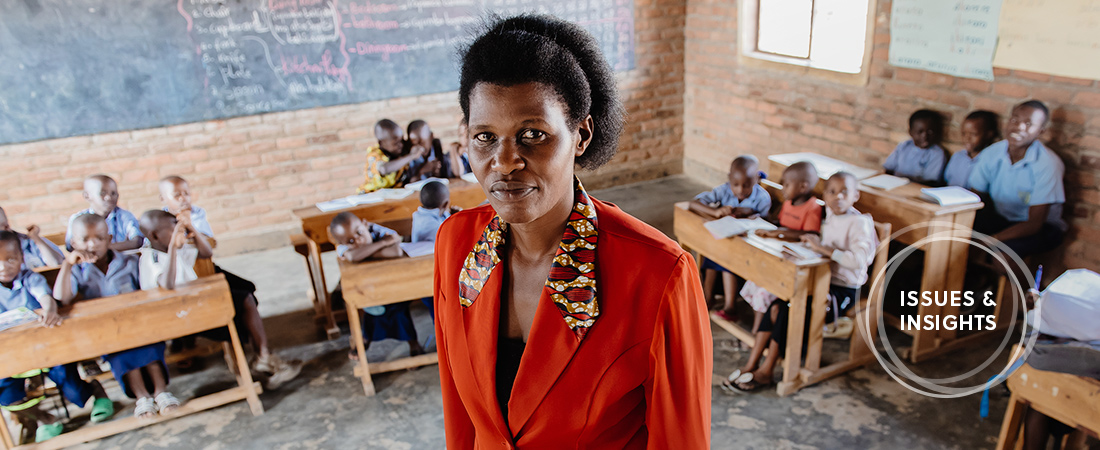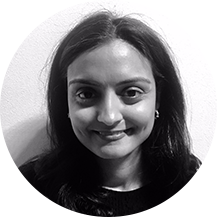Gender Equity—Still an International Priority

Education and economic programs are most powerful when they impact everybody—women and men alike. But in many countries, restrictive gender norms prevent women from accessing services and programs that could help them live better lives.
EDC’s Nalini Chugani, an international gender advisor, believes the development community has a responsibility to design projects that improve the lives of all people. Here, she offers ideas for how the field can promote and prioritize gender equity in international development.
Q: Why is it important to keep gender equity in mind when developing international projects?
Chugani: Integrating gender-sensitive strategies can increase equality of opportunity between women and men, and it can also provide women with opportunities they would not ordinarily have. This is important because international development projects are most transformative when everyone is included. And although girls and young women may bear the greatest burden of discriminatory social norms, boys and young men also face gender-related pressures about what they should or should not be doing. Looking at development projects through a “gender lens” can help address these pressures.
Q: How has gender inequity affected projects you have worked on?
Chugani: Simply put, gender norms continue to determine what women can or cannot do around the world. They dictate who gets to go to school, who gets to work, and who has family responsibilities.
In Djibouti, for example, EDC is leading a huge effort to develop young people’s work readiness skills. We’ve done local market assessments that have revealed tremendous opportunities for women to contribute to the economy. In response, we have developed training programs specifically for women to help them learn the skills we know are in demand.
The challenge, though, is the cultural expectation that women marry early and have children shortly afterward. So even if a young woman does enroll in our program, her ability to translate that training into economic gain really depends on her family’s willingness to let her work. Participating in the program is not just an economic issue—it’s a social one, too. And that’s just one example. Similar stories exist in our programs in Honduras, Liberia, and the Philippines.
Q: So how do you design programs that promote gender equity?
Chugani: It’s all about figuring out what the challenges to equity are going to be and then developing a program that can confront some of those challenges. In many of our workforce development programs, for example, women are worried about safety and transportation to and from the training site. This is a real concern and can deter women from participating at all. We need to consider this issue when we are designing the program. Where do we hold the training so that it is in a safe space? What can we do to help all participants get home safely? These questions have to be factored into our design if we want the program to truly be equitable.
Q: What projects stand out to you as models of gender-based design?
Chugani: We have had workforce development programs in Rwanda for over a decade now, and one project really stands out. During the Akazi Kanoze project, we learned that few women were able to take advantage of early child-care opportunities, and unemployment rates were high among young mothers. Well, this was both a challenge and an opportunity.
We ended up working with local partners to train young women to be day care and early childhood providers. After participating in the trainings, many of these young women went on to open up their own day care centers and preschools.
In Ethiopia, we recently conducted a gender assessment that revealed a lot of information about gender gaps and challenges for children accessing education and literacy programs. It became clear that some female teachers were not able to participate in training opportunities or take leadership positions in schools because of their child-care needs. The program has responded by providing child-care services while the teachers are engaged in training.
Q: What can we learn from these successes?
Chugani: I think one big lesson is that conducting a gender assessment at the outset of a project is essential. We wouldn’t have known about the potential for early childhood to be such a lucrative opportunity for these young women if we hadn’t conducted that assessment.
Another lesson is that it is possible to work gender equity into existing projects. You just have to be flexible, and you have to coordinate with local nongovernmental organizations and social service organizations that are also trying to promote gender equity. If you collaborate with local partners, you can greatly reduce barriers to education and civic participation for young women and girls.
Q: As a global community, are we making progress with respect to gender equity in international development?
Chugani: I think we have seen some mixed results. We are talking more about the issue, so that’s a good thing. But if we are still having the same conversations about the need for gender equity as we were having three years ago, then is that progress?
Even with respect to data, there is a big gender gap. We simply don't have much information on women’s economic participation, especially in countries with restrictive gender norms. But if we can collect better data, and then get that data into the hands of policymakers and the development community at large, I think we will really begin to see meaningful change.

